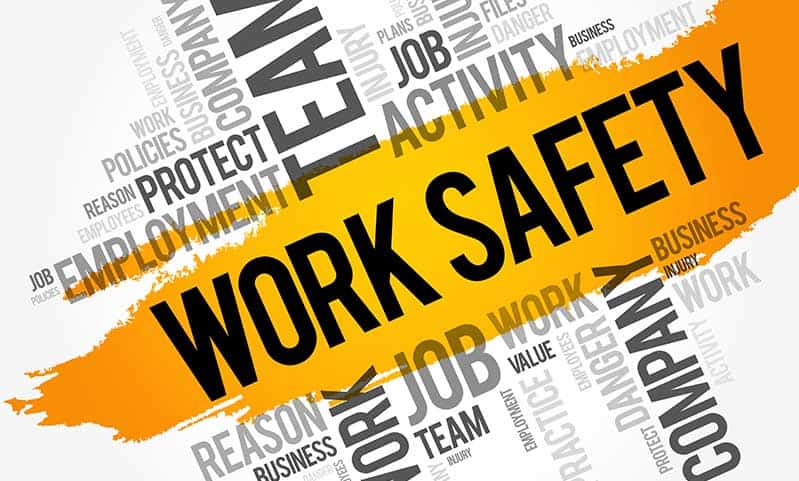Workplace safety is paramount in any business environment. Beyond legal obligations, it’s a moral duty to ensure employees are protected from harm.
Traditional methods often focus on a reactive approach, addressing issues after they arise. However, a proactive stance—anticipating and mitigating risks before they escalate—offers better protection and fosters operational efficiency.
Such a forward-thinking approach reduces the chances of disruptions, injuries, or even fatal incidents.
Understanding Workplace Hazards
Every workplace, irrespective of its nature, has inherent risks. These hazards range from obvious physical dangers to subtler threats like ergonomic or psychosocial issues.
Recognizing these potential dangers is the first step toward effective safety management. Physical hazards might include machinery, chemicals, or slippery floors, while psychosocial hazards can stem from workplace bullying, excessive workloads, or lack of job security.
It’s crucial for businesses to regularly conduct hazard assessments, ensuring that they remain attuned to evolving risks. Being well-informed of these dangers is not only key to preventing accidents but also instrumental in fostering a work environment where employees feel valued and protected.
Risk Assessment and Analysis
Risk assessment goes beyond just identifying hazards—it’s about understanding the likelihood and impact of these hazards turning into real incidents. The process involves systematically evaluating workplace elements to gauge potential threats.
By considering factors like the frequency of exposure to a hazard, the number of people at risk, and the severity of potential outcomes, organizations can prioritize their safety interventions. Regular risk analyses guide businesses in allocating resources effectively, ensuring that the most significant risks are addressed first.
Adopting a structured risk assessment approach not only safeguards employees but also aids in the efficient deployment of safety measures, optimizing both protection and productivity.
Legal Implications and Compliance
Ensuring safety is not only a moral duty but also a legal obligation. Organizations must be well-acquainted with local and international safety regulations to ensure compliance. In the unfortunate event of a workplace incident, legal complexities can arise.
A workplace accident lawyer becomes instrumental in such situations, helping both organizations and affected employees navigate the legal landscape. They can provide advice on liability issues, compensation claims, and regulatory breaches.
Failing to adhere to safety standards can lead to severe legal repercussions, including hefty fines and lawsuits. Therefore, it’s imperative for businesses to remain updated with the latest regulations, seek legal counsel when necessary, and continuously strive for a safe working environment.
Safety Training and Education
Knowledge is a powerful defense against workplace accidents. Regular safety training and education sessions empower employees with the necessary information and skills to navigate their tasks safely.
Whether it’s operating machinery, handling chemicals, or simply understanding emergency evacuation routes, proper training reduces the margin for error.
Moreover, using real-life incidents as case studies can drive home the importance of safety precautions. Continuous refreshers ensure that safety remains at the forefront of every employee’s mind, adapting to new risks and challenges as they emerge.
Safety Drills and Simulations
Preparedness is the bridge between knowledge and action. Safety drills and simulations provide employees with practical experiences to test their readiness in case of emergencies.
These rehearsals, whether for fire evacuations, earthquake responses, or chemical spill protocols, ensure that theoretical training translates into efficient real-world reactions.
Unexpected drills can also assess the spontaneous response of the staff, highlighting areas needing improvement. These simulations offer a dual benefit: they boost employee confidence in handling emergencies and expose potential weak points in the organization’s safety protocols.
By regularly practicing these scenarios, companies reinforce safety norms and ensure rapid, coordinated responses to actual crises.
Safety Equipment and Personal Protective Equipment (PPE)
Equipping employees with the right tools is paramount for effective hazard mitigation. Safety equipment and PPE, tailored to specific job functions, act as vital barriers against potential dangers.
From helmets and safety goggles to respirators and protective gloves, these tools are designed to prevent direct exposure to hazards. It’s essential for employers to ensure that such equipment is not only available and easily accessible but also maintained in optimal condition.
Regular inspections and timely replacements can prevent equipment failures. Ultimately, by prioritizing the provision and maintenance of PPE, businesses underscore their commitment to safeguarding their most valuable assets: their employees.
Engaging Employees in Safety Practices
Safety is a collective responsibility. For measures to be truly effective, they must resonate with everyone, from top management to the newest hires.
Encouraging an open dialogue where employees can voice concerns, share insights, or suggest improvements fosters a sense of ownership over safety protocols. Employee-led safety committees can play pivotal roles in bridging the gap between policy and practice.
By actively involving staff in the decision-making process, businesses not only tap into diverse perspectives but also nurture a culture where safety becomes a shared vision. An engaged workforce is more likely to adhere to, advocate for, and enhance workplace safety standards.
Continuous Monitoring and Auditing
A static approach to safety is insufficient in dynamic work environments. Regular monitoring and auditing of safety protocols ensure that they remain relevant and effective in the face of changing circumstances.
This proactive review identifies lapses in adherence, potential new hazards, or areas of improvement in current procedures. Using tools, metrics, and feedback, organizations can iteratively refine their safety strategies.
Periodic safety audits, both internal and third-party, offer objective evaluations and insights. Such diligence not only assures employees that their well-being is a constant priority but also positions the organization as a responsible and adaptive entity in the realm of workplace safety.
Emergency Preparedness and Response
Even with the best preventative measures, emergencies can arise. Preparedness is the difference between controlled response and chaos. A well-defined emergency plan outlines the steps to take during crises, ensuring swift, coordinated action with minimal panic.
Training employees in these procedures ensures that, when the alarm sounds, everyone knows their role. Moreover, post-incident analyses provide valuable insights, highlighting what went right and areas needing refinement.
By actively preparing for worst-case scenarios and learning from real-life incidents, organizations can continually enhance their response mechanisms, minimizing potential harm and demonstrating a relentless commitment to the safety and well-being of their workforce.








